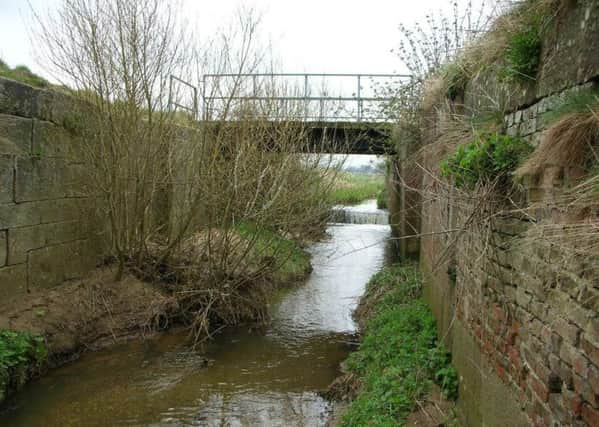New book details history of Caistor's unfinished waterway


‘The Caistor Canal’ by Christopher Padley has been published by the Society for Lincolnshire History and Archaeology and costs £5 from Caistor Arts and Heritage Centre or by post; details at www.slha.org.uk .
Caistor Canal was conceived in July 1792 to be a feeder into the River Ancholme, enabling boats from the Ancholme to reach the market town of Caistor, some 8 miles to the east.
Advertisement
Hide AdAdvertisement
Hide AdAn initial meeting, at which the grand design was laid on the table, was called by a Mr Hall on July 3 1792, at which it was decided to ask canal engineer William Jessop to prepare a survey of the route.
The canal was authorised by an Act of Parliament passed on June 3 1793, which created the Caistor Canal Navigation Company, with powers to raise £15,000 in £100 shares to construct the canal, and an additional £10,000 if required.
Traffic consisted of coal inward from the Humber through the Ancholme and agricultural produce leaving the area, as well as general goods.
There were six locks on the canal, which lowered the level of the canal by 42 feet.
Advertisement
Hide AdAdvertisement
Hide AdThe Act authorised the building of the canal to Caistor and a lane was constructed (Navigation Lane) from the town centre to the site of the proposed basin.
Construction, however, stopped at Moortown, some 3.5 miles west of Caistor, leaving the waterway unfinished. It is likely financial problems were the reason for this.
The canal appears to have become disused in the 1850s, but some traffic may have continued to South Kelsey, the village at its midpoint, until some years later.
As a response to the flooding of homes in South Kelsey during June 2007, the Environment Agency dredged part of the canal in March 2010 to return it to its original depth to improve flood defences locally.
The canal is no longer navigable but is maintained by the Environment Agency as a main drainage channel in the South Kelsey to Moortown area.